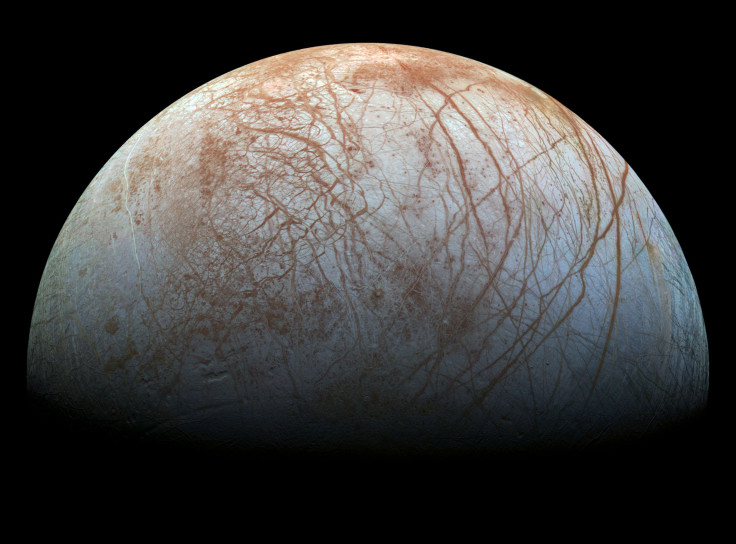Signs Of Life On Europa Could Be Inches Below Jovian Moon's Surface

For years, scientists looking at the possibility of life beyond Earth have been exploring the case of Europa, one of Jupiter’s four largest moons.
The enigmatic Jovian moon has an ice-covered surface, but most importantly, it hosts a global ocean under its surface, one that, many think, could be an ideal place for life to thrive. Several space experts across the globe have posited the icy ocean beneath the surface of Europa could be carrying the ingredients required to support life.
While this theory holds a lot of promise, the exact answer to the question regarding life on Europa has still not been found. Scientists have not located biosignatures or chemical markers indicating the presence of some form of microbial life or organism. However, a new research published in the journal Nature reveals where they should look or how deep they’ll have to dig in order to find traits of life on the Jovian moon.
It has long been believed that some signs of life — if it exists — could be located in gas plumes spewing out of the cracks on Europa or in the internal salty water making its way up to the surface. Future missions to the moon such as the Europa Clipper could use these materials to find signs of life, but there have also been some questions regarding the survivability of these signatures.
Europa is regularly blasted by intense radiation from Jupiter, which means that the material coming from the subsurface might be altered from its original form or any traces of life present in it might be destroyed.
“If we want to understand what’s going on at the surface of Europa and how that links to the ocean underneath, we need to understand the radiation,” Tom Nordheim, a research scientist at NASA’s Jet Propulsion Laboratory, said in a statement. “When we examine materials that have come up from the subsurface, what are we looking at? Does this tell us what is in the ocean, or is this what happened to the materials after they have been radiated?”
This is why Nordheim and colleagues used the data collected by NASA’s Galileo and Voyager 1 spacecraft and created a radiation map of Europa. They pinpointed radiation-affected locations covering more than half of the ocean world and came to the understanding that regions around Europa’s equator receive most radiation, which decreases as we move closer to the poles.
“This is the first prediction of radiation levels at each point on Europa’s surface and is important information for future Europa missions,” study co-author Chris Paranicas added in the statement.
But that’s not it. The research team also calculated how far the radiation from Jupiter could go below the surface of Europa. They tested the effect of radiation on amino acids, one of the simplest molecules qualifying as a biosignature, to determine how that radiation would affect any form of life hiding in the ocean.
The result of the work revealed that any future mission landing on the surface of Europa could find preserved signs of microbial life anywhere between one to eight inches beneath its surface, depending on the amount of radiation received by the region in question. Essentially, if the radiation received by the region is less, it might have to drill less than an inch. If it is more, it might have to go deeper up to six to eight inches.
© Copyright IBTimes 2025. All rights reserved.





















